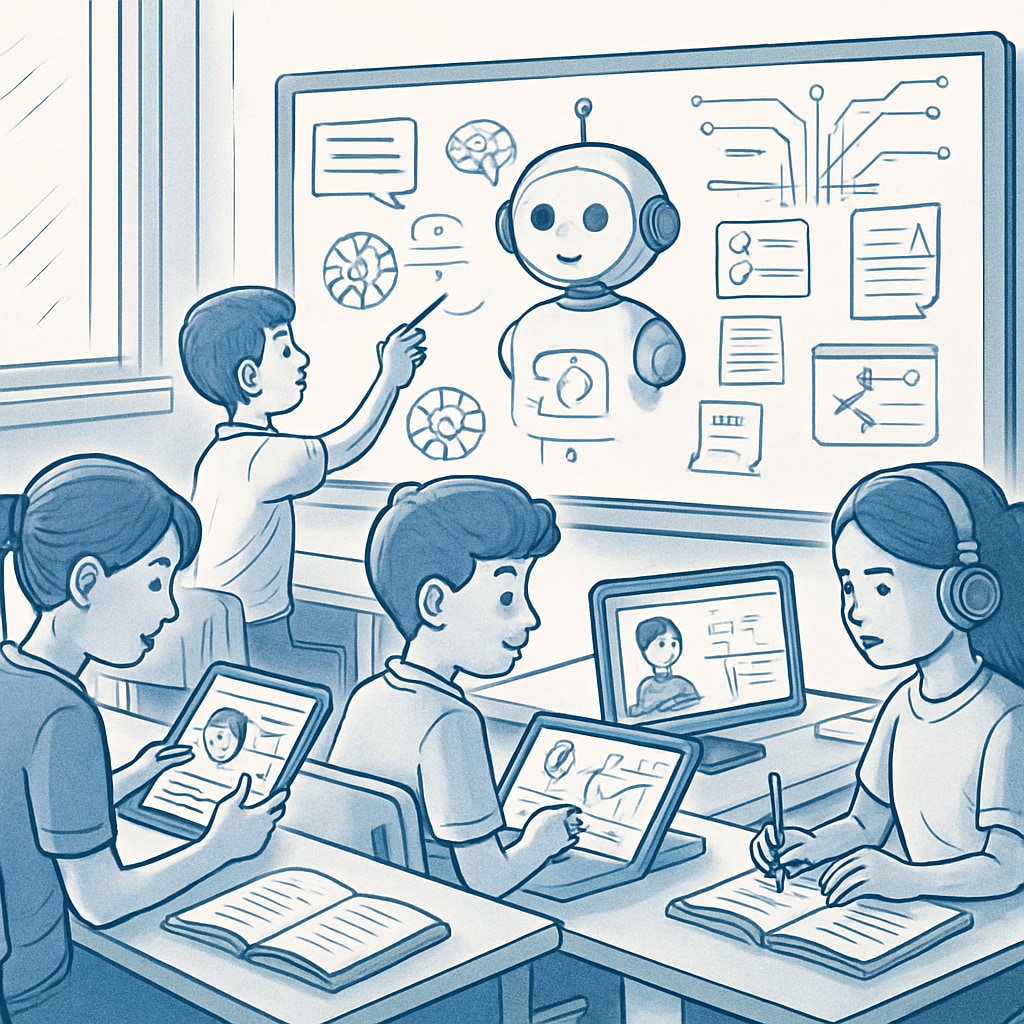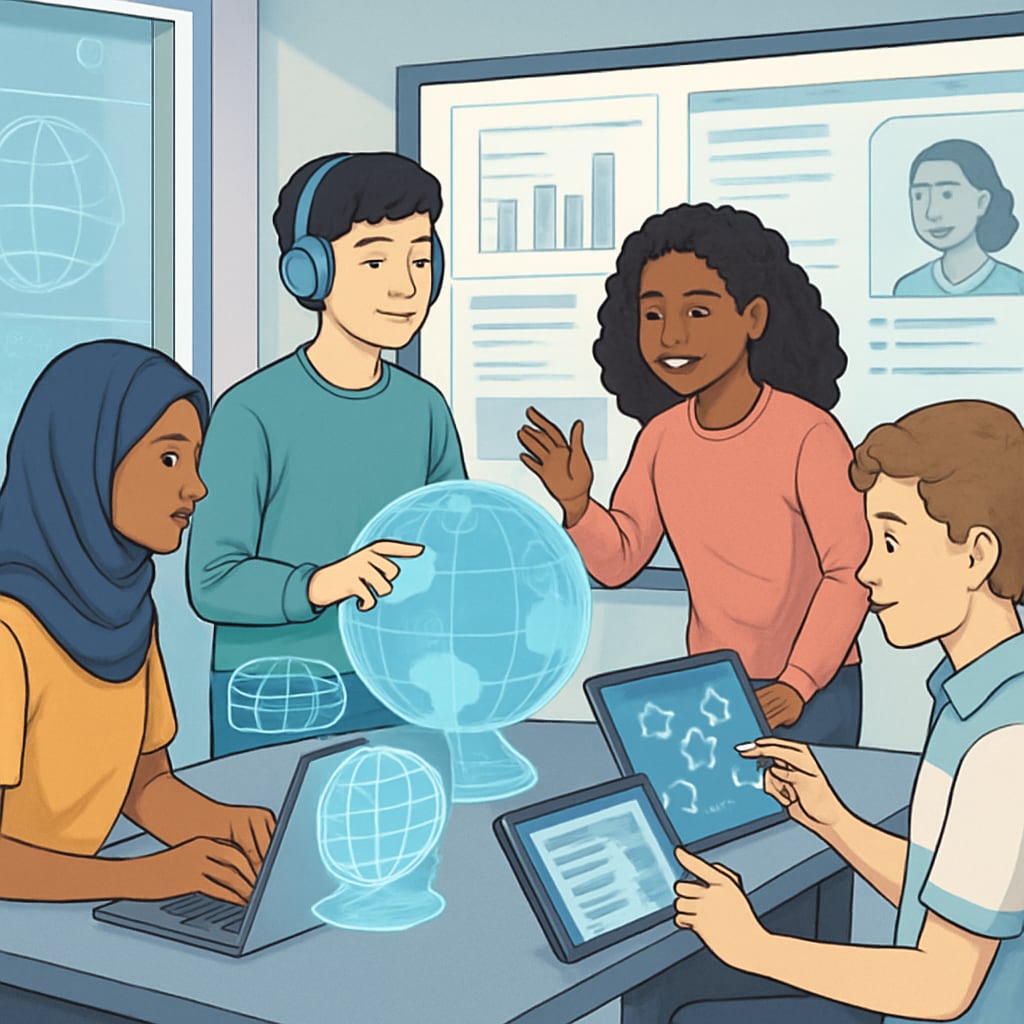Artificial intelligence (AI) and globalization are reshaping the future of education, setting the stage for transformative changes by 2030. These forces are redefining how students learn, how teachers teach, and how education systems prepare young minds for a rapidly evolving world. This article delves into how AI and global connectivity are influencing K12 education, from innovative teaching models to the integration of advanced technology, showcasing the potential for a dynamic future where human-machine collaboration becomes the norm.
Technology Integration: The Role of AI in Personalized Learning
AI is revolutionizing education by enabling personalized learning experiences tailored to individual student needs. Machine learning algorithms can analyze data on student performance to adapt lesson plans in real time, ensuring that each learner progresses at their own pace. For example, AI-driven platforms like adaptive learning tools can identify gaps in understanding and provide targeted exercises to address them.
Moreover, AI-powered virtual tutors are becoming more sophisticated, offering students 24/7 access to support. These tools can answer questions, provide explanations, and even simulate one-on-one interactions, making quality education more accessible than ever before.

Globalization’s Impact on Curriculum and Cultural Exchange
Globalization is breaking down traditional barriers in education, enabling cross-border collaboration and cultural exchange. By 2030, K12 curriculums are expected to incorporate global perspectives, emphasizing multilingual education, cultural competence, and international collaboration through virtual classrooms.
For instance, platforms like e-pals and virtual exchange programs are already connecting classrooms across continents. These initiatives allow students to work on joint projects, share cultural insights, and develop a global mindset, which is essential in the interconnected world of the future.
As a result, students will not only learn core subjects but also develop critical soft skills like empathy, adaptability, and cross-cultural communication. These are invaluable assets in a globalized workforce.

Human-Machine Collaboration: A New Era of Teaching
While AI can automate repetitive tasks like grading and administrative work, its true potential lies in enhancing human-machine collaboration. Teachers will increasingly rely on AI tools to design engaging lesson plans, track student progress, and identify areas for intervention. This shift allows educators to focus on what they do best—mentoring, inspiring, and fostering critical thinking.
For example, AI-driven analytics can provide insights into class dynamics, enabling teachers to tailor their approach to better suit diverse learning styles. In addition, augmented reality (AR) and virtual reality (VR) technologies are becoming integral to classrooms, creating immersive learning environments that make abstract concepts tangible.
However, the rise of AI also raises ethical questions, such as data privacy and the potential for bias in algorithms. Educators and policymakers must work together to ensure that AI is implemented responsibly, prioritizing equity and fairness for all students.
Challenges and Opportunities in 2030
While AI and globalization offer immense potential, there are challenges to overcome. Access to technology remains unequal, with many schools in underserved areas lacking the resources to adopt advanced tools. Bridging the digital divide will require concerted efforts from governments, private sectors, and international organizations.
On the other hand, the opportunities are vast. By 2030, education systems could be more adaptable, inclusive, and globally connected than ever before. The synergy of AI and globalization has the power to unlock new possibilities, empowering students to thrive in a complex world.
In conclusion, the future of K12 education lies at the intersection of artificial intelligence and globalization. By embracing these transformative forces, schools can create a dynamic learning environment that prepares students for the challenges and opportunities of the 21st century. The journey to 2030 promises to be an exciting one, where innovation and collaboration redefine the meaning of education.
Readability guidance: Short paragraphs, clear subheadings, and the strategic use of lists enhance readability. The article ensures a balanced mix of technical insights and accessible language, catering to both educators and general readers.


